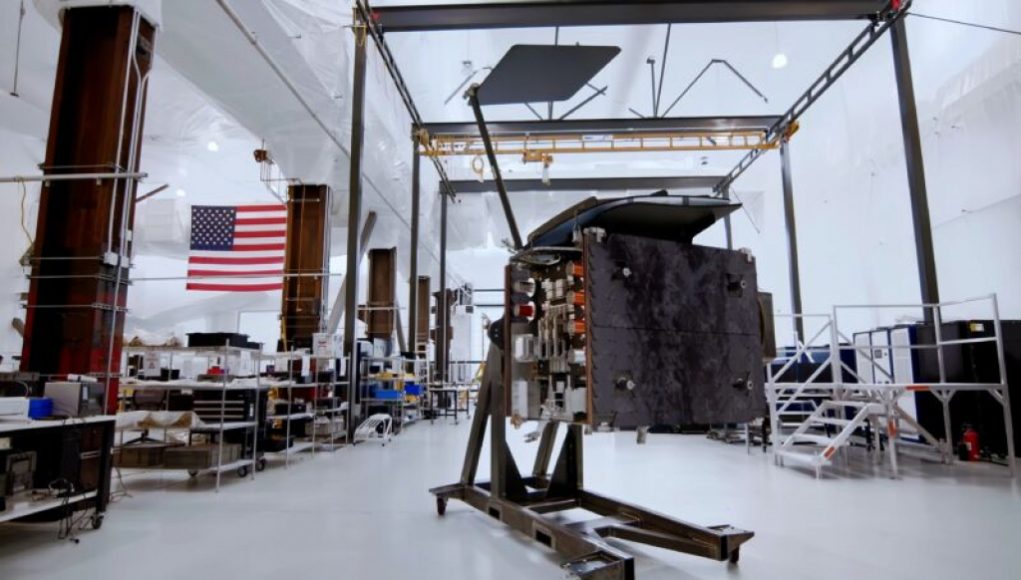Astranis, a company on a mission to provide Internet connectivity from geostationary space, made an exciting announcement in May. Their “Arcturus” satellite was successfully deployed after being launched on a Falcon Heavy rocket.
Once Astranis gained control of the satellite, they wasted no time. They sent commands, updated the flight software, and raised Arcturus’ orbit, positioning it perfectly over Alaska. From there, the satellite connected with an Internet gateway in Utah and established communication with multiple user terminals in Alaska.
However, Astranis encountered an unexpected setback. The satellite experienced an abrupt anomaly with a supplier’s component on the solar array drive assembly. John Gedmark, co-founder of Astranis, provided an update, explaining that this assembly rotates the solar arrays to ensure they are always facing the Sun, keeping the spacecraft powered at all times.
“Our incredible engineering team has been working tirelessly to troubleshoot the issue,” said Gedmark. “We have identified the exact source of the failure and know how to fix it for future spacecraft. Unfortunately, due to the involvement of an external vendor, we cannot disclose all the technical details.”
Advertisement
The disappointment in Gedmark’s update is palpable.
“This is a frustrating situation. The Arcturus spacecraft is safe and fully under our control, our in-house designed components are working perfectly, and the tanks are fueled for years of operation,” he expressed. “However, unless something major changes, the mission to provide Internet connectivity in Alaska will be delayed.”
Fixed for the future
Astranis was founded in 2015 with the goal of delivering high-speed Internet from geostationary space using microsatellites built in-house, all at an affordable price. The successful launch of Arcturus proved that Astranis’ small satellite technology can withstand the harsh radiation and thermal environment that larger, more expensive satellites have traditionally dominated.
Considering this was an endeavor on a tight budget, it’s not entirely surprising that the satellite encountered an unforeseen problem. The true test for Astranis now is to learn from this failure and ensure that their second satellite operates flawlessly in space.
In his update, Gedmark assured that the company has identified a quick solution for future spacecraft currently in production. Astranis is also working towards providing Internet service in Alaska through Pacific Dataport, as originally planned with Arcturus.
As a backup plan, Gedmark revealed, “We have developed a special, multipurpose satellite called UtilitySat. It can serve as an on-orbit spare and bridge us to a full replacement satellite. UtilitySat is capable of operating anywhere in the world, on multiple frequency bands, with the flexibility of a software-defined satellite. It has been in development for over a year, is in the final stages of integration, and will be launched at the end of this year.”
For many users in remote areas around the world, the promise of faster, more reliable internet access seemed like an answered prayer. However, those prayers may have been answered too soon.
The ESEO satellite, launched by the European Union late last year to show the power of high-speed on-demand internet, has been rendered useless due to power supply problems.
The satellite, which orbits Earth 18 times a day and sends and receives data from ground stations over a laser-based optical communications network, has suffered a number of malfunctions over the course of its short life.
Most recently, the satellite experienced a power supply issue that has effectively disabled it and its potential to bring the internet to isolated locations.
In a statement released on Thursday, the European Space Agency (ESA) said that, following a comprehensive review, the cause of the problem was determined to be a faulty power supply. The power supply failure caused the satellite to enter a ‘safe mode’ to protect its internal electronics from damage, but has since failed to reboot.
The ESA has been quick to point out that the failure was caused by an external factor and that the failure of the ESEO satellite was not the fault of their team.
The ESA has already expressed their deep regret over the failure of the ESEO satellite and is continuing to work on the problem. The ESA is confident that the problem can be resolved in the near future and the ESEO satellite will be able to resume the important mission it was designed to fulfill.
In the meantime, plans for similar projects are already underway, with the ESA, other European agencies, and commercial enterprises all investing in similar internet-providing satellite projects.
As of now, it remains to be seen if other internet-providing satellites will be able to fill the gap the ESEO satellite has left in its wake. Until then, many remote locations around the world will remain unconnected, leaving many users eager for the satellite’s full and speedy resurrection.




















